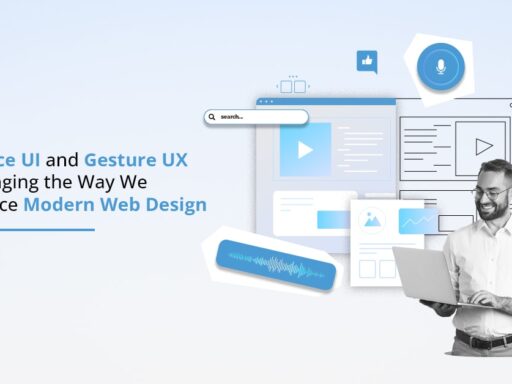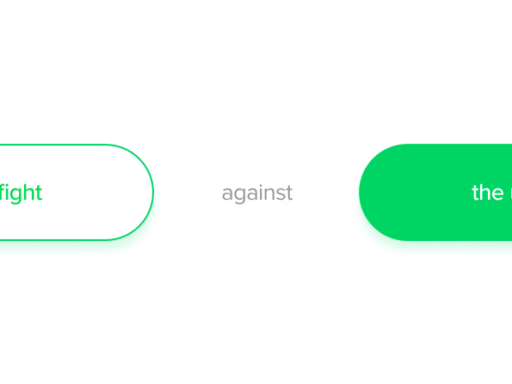Goran Paun, Creative Director of ArtVersion design consultancy. We craft ideal user experiences for the world’s most innovative companies.
As we start to wrap up 2024 and look toward a new year, I’ve been contemplating the trends and industry changes we’ve experienced. The recent surge in artificial intelligence and machine learning is significantly impacting not only what’s possible with interfaces but also what users are expecting. Naturally, the landscape of user experience design continues to evolve as new technologies emerge, user expectations change and businesses adapt to more human-centered approaches. UX designers are prioritizing clarity, accessibility and personalization that allow for more seamless and engaging digital experiences, whether on the web, in productivity apps, car entertainment units or any other digital dashboard.
AI-Driven Personalization: Enhancing User Journeys
AI is reshaping how we think about user experience, especially in the realm of personalization. AI’s ability to analyze big data enables UX designers to create highly customized and adaptive experiences. In 2024, users expect more than just personalized product recommendations—they’re seeking dynamic interfaces that cater to their behavior, preferences and context in real time.
We all know about light and dark modes—they’re a perfect example of this expectation. This theme personalization is now available on almost any interface. As we wake up in the morning with light mode and move into the evenings with dark mode, our phones, computers and even GPS units in our cars can automatically switch modes for comfort and to reduce eye strain, without needing user input.
The text size on a webpage can be configured automatically, using machine learning and AI, based on user preferences set in the system settings, allowing for better legibility and access. Color and contrast ratios on websites can also be adjusted automatically for people with visual impairments.
This is a game changer in terms of usability, as many systems are now aligning features for personalized experiences. The expectation is that, based on certain usage patterns and browsing history, recommendation algorithms will influence what we see and how we interact with digital platforms. Tools like Adobe Target provide advanced recommendation algorithms that analyze user behavior to deliver more relevant content and product suggestions.
While UX designers may not be directly involved in the algorithmic logic or coding behind these models, they can significantly influence model training by curating the datasets and defining the parameters used during the model training phase. This involves selecting specific attributes and criteria, such as user interactions or content metadata, to ensure the algorithms generate relevant and meaningful recommendations for end-users.
In 2024, personalization isn’t just a nice-to-have; it’s central to creating relevant, engaging digital experiences. As personalization becomes more prevalent, it’s crucial that these experiences are accessible to all users.
Accessibility As A Core Principle, Not An Afterthought
While accessibility has been a talking point for years, it’s taken center stage this year. Inclusive design ensures that products are usable by all people, from vision-impaired users to those with cognitive challenges, without the need for adaptation. We’re seeing brands invest more in accessible solutions—not just because it’s a regulatory requirement, but because it drives better business results and, honestly, it’s the right thing to do. Designing with accessibility in mind not only enhances user satisfaction but also helps businesses expand their reach to new, underserved markets.
No-Code/Low-Code Platforms: Empowering Non-Developers
As no-code and low-code platforms continue to rise in popularity, they’re empowering designers, marketers and even business owners to create functional websites and applications without the need for coding expertise. The surge of these platforms in 2024 is democratizing UX design, allowing non-developers to prototype and iterate on user interfaces rapidly. Popular tools now offer seamless collaboration and extensive design capabilities. By enabling teams to bypass development bottlenecks, these tools foster greater innovation and faster time to market.
No-code and low-code platforms are transforming the way we approach web design by lowering the barrier to entry and speeding up the creative process. We’re also seeing similar expectations among enterprises, where marketing teams, site administrators and internal teams are looking for modern approaches to web design that allow them to work on the site without constantly needing to rely on their agency. As a certified Adobe Experience Manager (AEM) partner agency, we often collaborate with corporations and large organizations. While we continue to assist them with major structural website changes, day-to-day web tasks can now be easily handled by their teams using drag-and-drop functionality, eliminating the need for extensive technical knowledge. This shift enables client teams to manage their websites more efficiently, freeing up our developers to focus on more complex challenges.
Data-Driven Design: Leveraging Analytics For UX Decisions
User behavior analytics, A/B testing and heat mapping have become essential tools for designers looking to refine user journeys and optimize conversion rates. These tools can now be found within the platforms themselves, whereas historically all of those analytics were dependent on third-party implementations. Think about Jetpack within the WordPress ecosystem—it’s a perfect example. With its AI integration, it records analytics, user trends and searches all within a single dashboard.
With advancements in data visualization tools, teams can now gather deeper insights in real time and collaborate with stakeholders much more easily, as data is available and accessible to all. This allows for more informed design decisions. This trend is shifting the design process from guesswork to a fully data-informed approach where every change can be validated and measured.
Preparing For 2025 And Beyond
How can you leverage these trends and prepare for the future? Here are some concrete actions you can take:
• Stay informed and experiment. Keep up to date with new AI tools and no-code platforms. Experiment with them to understand how they can fit into your workflow and improve your designs.
• Prioritize accessibility. Make accessibility a core tenet of your design philosophy, ensuring all users have an equally engaging experience.
• Embrace personalization and data-driven approaches. Use AI to craft personalized experiences and leverage data to make informed decisions.
By embracing these trends now, you can stay ahead of the curve and create digital experiences that are not only visually compelling but also deeply resonant and meaningful to your users.
Forbes Agency Council is an invitation-only community for executives in successful public relations, media strategy, creative and advertising agencies. Do I qualify?








